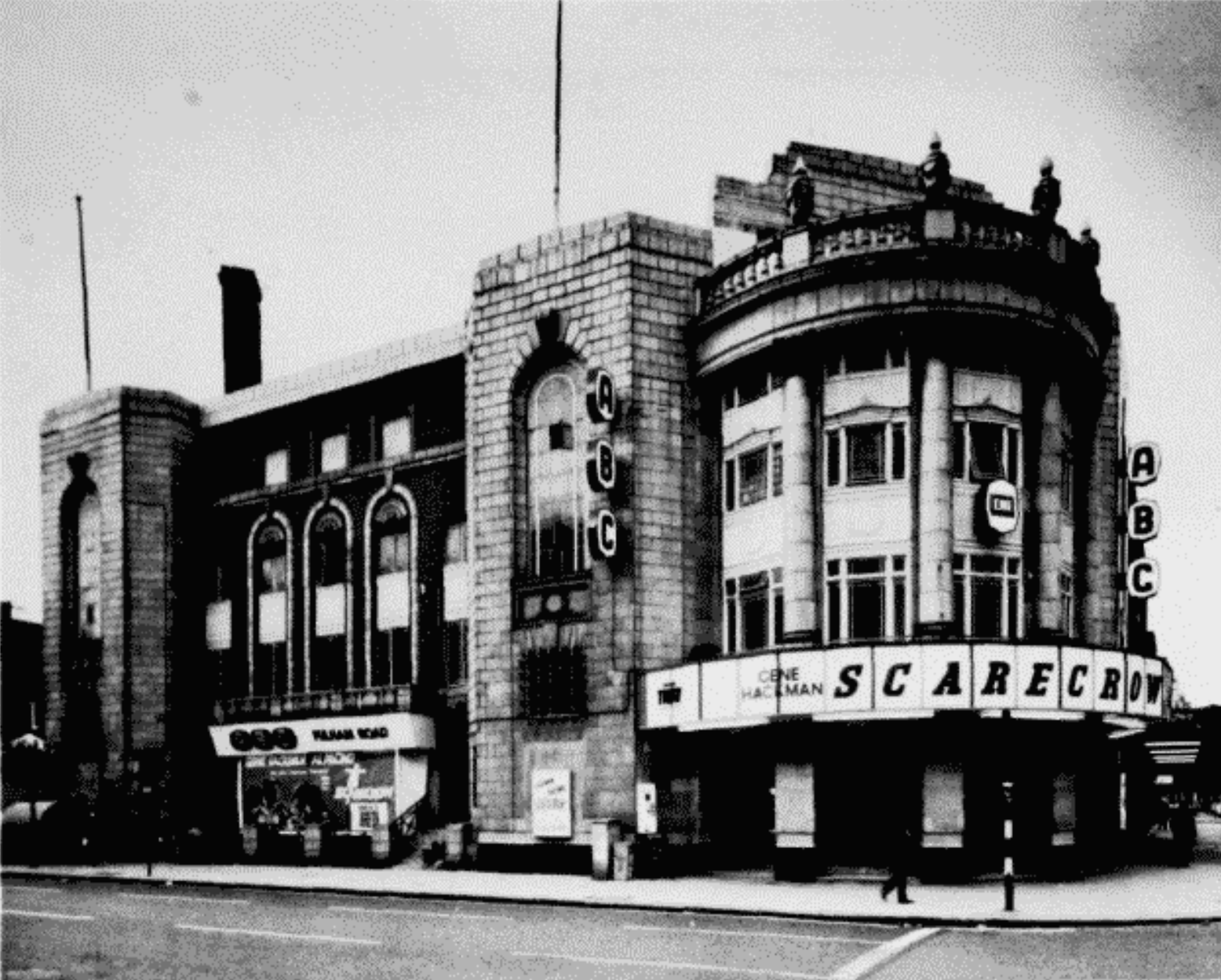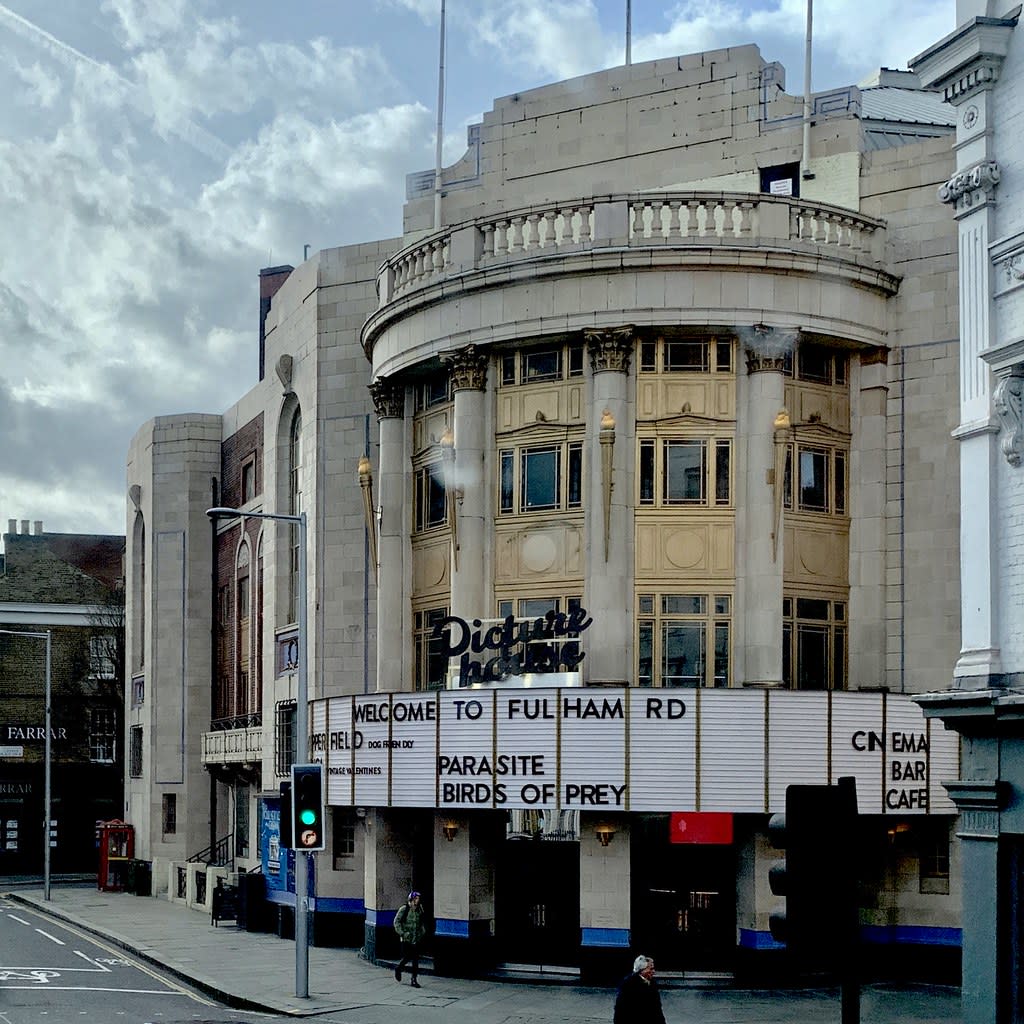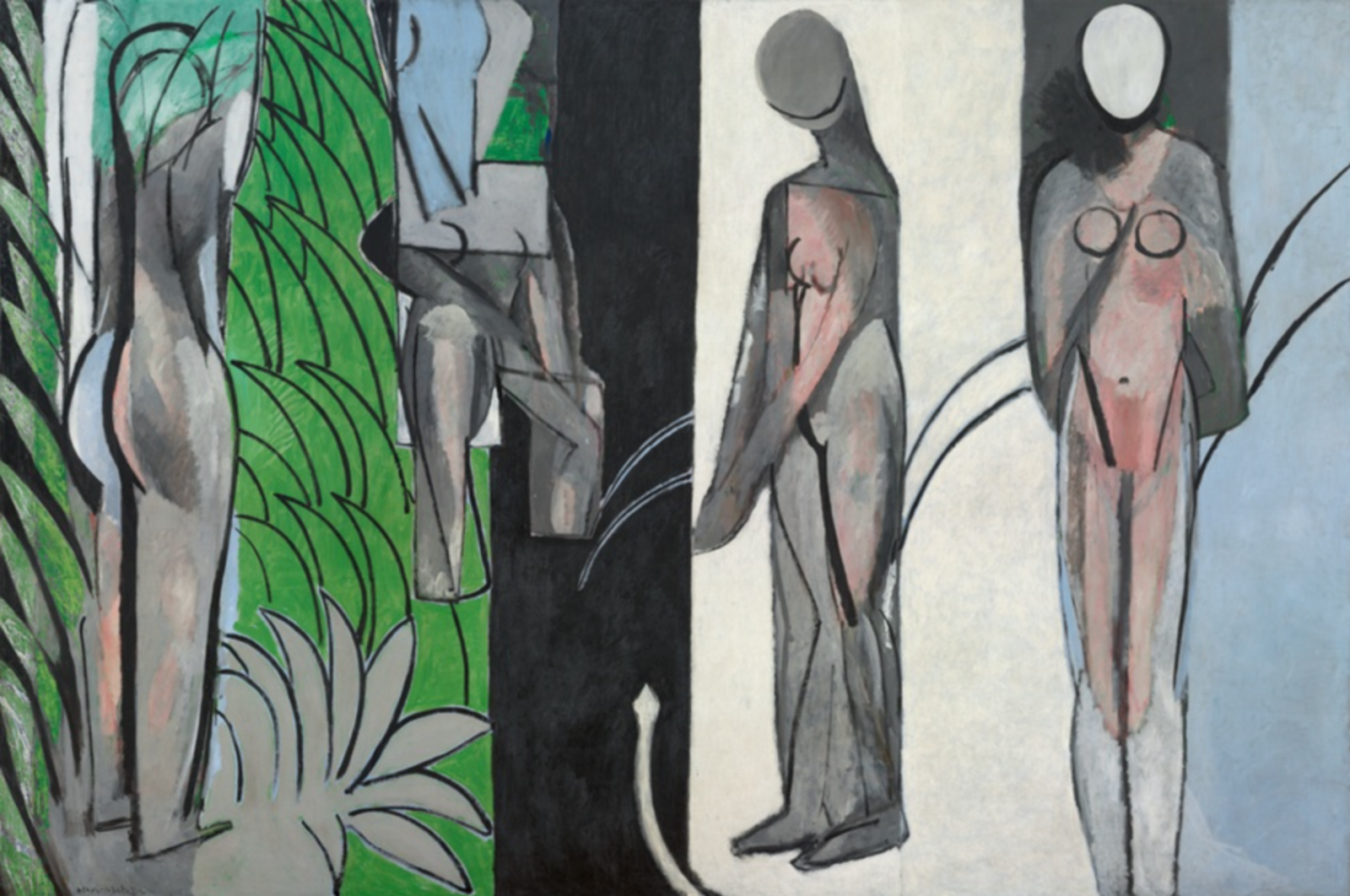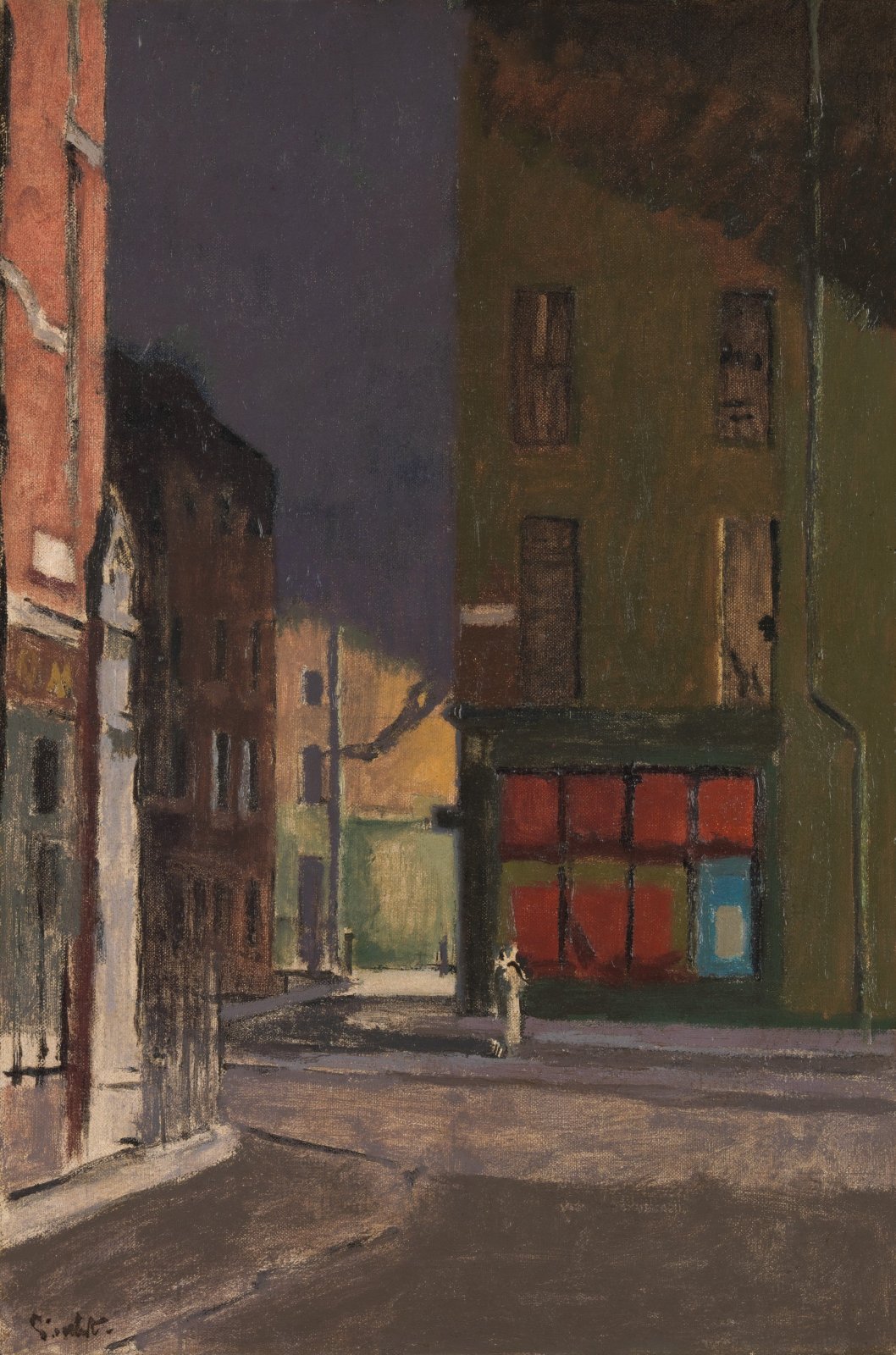A regular and avid cinema-goer, R.B. Kitaj revered the medium of film. He often borrowed figures from film stills and – on one notable occasion – decided to paint the cinema itself.
R.B.Kitaj
Fulham Road Cinema Bathers, 1988

At traffic lights, red means ‘stop’. In a painting like Fulham Road Cinema Bathers, the red light’s meaning is less clear. The ambivalent art of R.B. Kitaj (1932-2007) is loaded with suggestive gestures and fragmented imagery, eclectic source material and narrative disjunctures. Why are there bathers outside a cinema on the Fulham Road? This unresolvable disjuncture between figures and setting in Fulham Road Cinema Bathers speaks of the post-modernist complexity in his work. ‘No more questions. Is not this rather the place where one finishes vanishing?’

The Forum Theatre opened in 1930. As with so many other variety palaces, despite its elaborate interiors and three-manual Compton organ, it was destined for life not as a music hall but a cinema. It was acquired almost immediately by Associated British Cinemas, which still had ownership when it was depicted by Kitaj in 1988. (In Fulham Road Cinema Bathers, the letters ‘A B C’ are inscribed down the side of the building.) The building became a site of calligraphic invention in Kitaj’s painting and, though the basic structure is recognisable (the windows and vertical divisions are true to life), he suppressed the faded grandeur of pleasure palace classicism in favour of his own ornamentation. Giant order Corinthian columns and gilt flaming torches are replaced by decorative scrolls and commas, better suited to the mood of the picture.

Complementing this calligraphy is the artist’s distinctive handwriting – a cursive italic script – which reveals what was on view at the cinema. (The use of handwritten text is a defining trope of Kitaj’s work, appearing as early as 1960 in The Murder of Rosa Luxemburg.) Each film title listed on the marquee lightbox was released in 1988: Imagine was a documentary biopic about John Lennon, while Frantic was a vehicle for Harrison Ford, directed by the fugitive sex offender Roman Polanski. The third single-word film title has yet to be deciphered by InSight. Presumably, Kitaj faithfully transcribed the films that were showing at the time of his painting.

As Marco Livingstone has described, Kitaj lived near the Fulham Road cinema and his interest in local subjects followed from the instruction of his doctors.
For Kitaj, [his immediate environment] took on a new urgency after his heart attack, when he was advised by his doctor to take a daily walk for the sake of his health. He chose to take his exercise at the start of every day, around 6 a.m., when the streets were still and deserted. The routine introduced him to a new range of subjects drawn from the Chelsea and South Kensington districts of London […].
More generally during this period, Kitaj was layering his paintings with autobiographical content and Fulham Road Cinema Bathers belongs to that trend. Perhaps owing to the direct inspiration for its setting, it is one of the artist’s more comprehensible paintings from the 1980s and ‘90s.

Aside from the use of autobiography, Kitaj consistently explored themes of sex and eroticism. One expression of this interest was his pursuit of the ‘bathers’ genre. Naked figures – entering water, leaving it, drying themselves, all in communal intimacy – provided a lasting frisson to Kitaj’s imagination. In relation to a painting he executed in 1993-94, he wrote,
My favourite painting in London is Cézanne’s very late, absurd Bathers in the National Gallery. […] I got a canvas the same size, in order to do my picture in the highest Western tradition and also the more specific genre which Matisse brought to a climax in his tremendous Chicago Bathers by a River and which Picasso pursued into the 1970s.
This awareness of bathers in art history informed Kitaj’s approach to the subject. He was intensely self-conscious of both his paintings’ style and their field of reference. So much is apparent from Fulham Road Cinema Bathers, in which the naked ‘bathing’ figures at bottom right bear a passing resemblance to some of Michelangelo’s sinewy Sistine Chapel saints.

With this Michelangelo reference in mind, one of Kitaj’s great talents was for reconciling conflicts of influence. Pictured at the back of Fulham Road Cinema Bathers, projecting a little beyond the cinema’s façade, is 152 Fulham Road. This dingy street corner is given a blue outline and, at ground level, a solidly painted green wall. Above, the chimney stack is brick-brown; the chimney pots are green. A few decades earlier, London’s lamp-lit street corners had also interested Walter Sickert, who made pictures of a Fitzrovia intersection – the meeting point of Maple, Cleveland and Clipstone Streets. Like others of his generation, Kitaj drew upon Sickert’s example to memorable effect. Unlike others, Kitaj was able to sustain this allusion alongside a host of competing references – to Michelangelo, Cézanne, Matisse and others.

Images:
1. R.B. Kitaj, Fulham Road Cinema Bathers, 1988, oil on canvas, 153.7 x 154.3 cm | For Sale
2. ABC Cinema, Fulham Road, 1973
3. Fulham Road Cinema Bathers (detail)
4. Harrison Ford and Emmanuelle Seigner in Frantic (1988, director Roman Polanski)
5. Fulham Road Picturehouse © Tony Hall
6. Henri Matisse, Bathers by a River, 1909-17, Art Institute of Chicago © Succession H. Matisse
7. Walter Sickert, Maple Street, circa 1916, Metropolitan Museum of Art, New York

